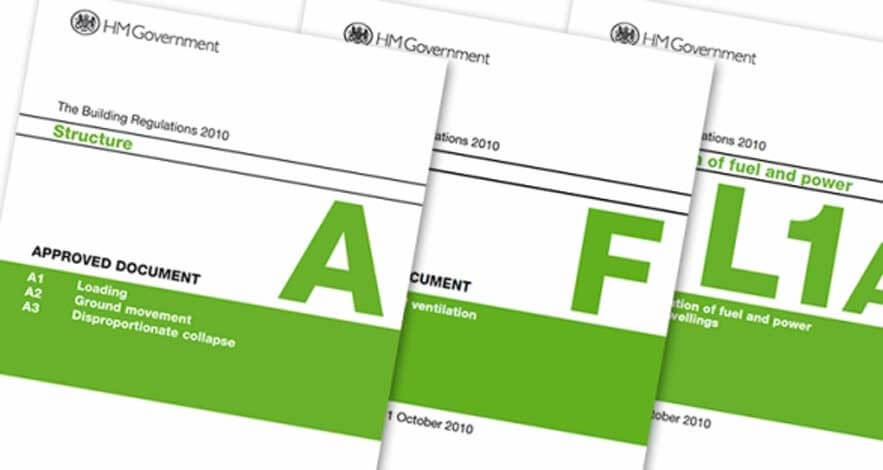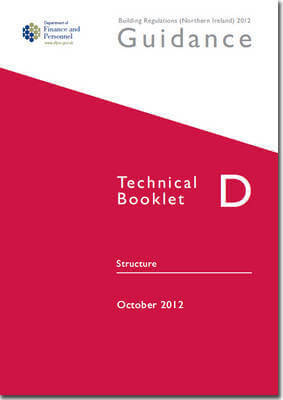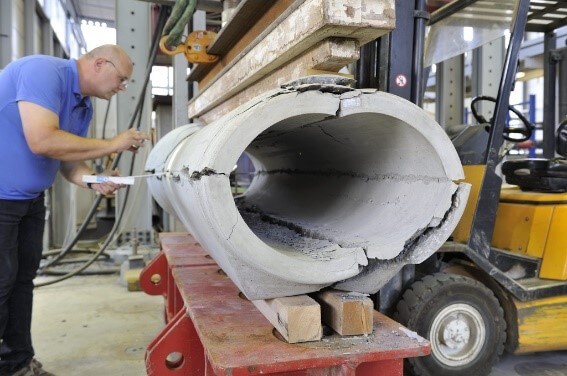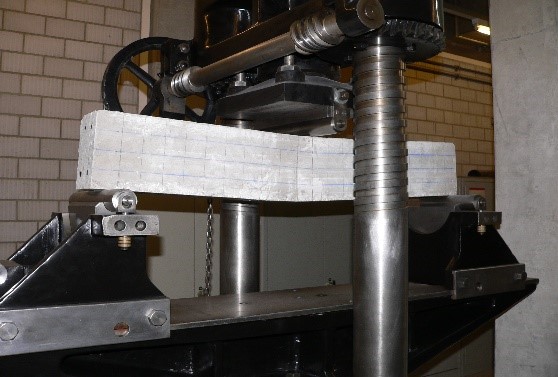How to plan a Structural Survey for a Concrete Structure
Planning a structural survey involves a strategic approach, integrating health and safety considerations. It necessitates a comprehensive understanding of the structure's history, geometry, and existing conditions.
Critical to this process is the staged, strategic approach to information gathering, which emphasizes the investigation of potential weaknesses and the verification of critical dimensions.
Are there any legal requirements or best practice guidelines I must be familiar with?
Before carrying out a structural survey it is vital to understand the requirements imposed by UK legislation and be familiar with best practice through guides from organisations like ISTRUCTE or ICE.
These documents include:
Approved Document A (Structure) or Technical booklet D (Structure)


Figure 1. Approved documents and technical booklets
These provide technical guidance on meeting building regulations for structures and their requirements for stability. This information is vital for the educated assessment of structural safety.
Eurocodes

Figure 2. Eurocode family of standards
These documents provide a common approach to structural design across Europe with National Annexes that specify local parameters and adjustments necessary for the design of structures within the UK. This local data is vital for accurate assessment of structural performance.
Health and safety and CDM regulations
Structural surveys must comply with Health and Safety Executive (HSE) guidelines and the Construction (Design and Management) Regulations 2015 (CDM 2015) to safeguard the health and safety of workers and the public. These documents mandate risk assessments, the involvement of competent individuals, and adherence to safety protocols to prevent unintended structural collapse especially during temporary works.
Best practice guides
Many organisations or standards bodies within the concrete industry have produced best practice guides to structural surveying including:
Guide to Surveys and Inspections of Buildings and Associated Structures by ISTRUCTE.
Surveying safely: health and safety principles for property professionals by RICS.
Guidance on Structural Stability during Alteration, Demolition, and Dismantling by HSE.
Appraisal and Repair of Existing Concrete Structures by ICE.
What is the scope of the survey?
It is vital to understand and define the exact scope of the survey to ensure a strategic plan can be created from the outset to collect all required information.
Survey scope will vary significantly based on the purpose of the survey. For example, if defects have been spotted the scope will often be a narrow investigation and testing of the specific fault. Alternatively, condition surveys mandated by a maintenance schedule will likely be less intensive and a more general assessment of the entire structure.
At this stage questions must be answered such as:
What does my client want to know from this survey?
What is my budget?
What are the key areas of concern?
What level of detail will the survey aim for?
What equipment will be required for the survey and is it available?
What investigations are possible based on the structural configuration or deterioration?
What do I need to know about the existing structure?
When planning a structural survey for a concrete structure, reviewing the right documents and information is crucial to ensure a thorough, effective and safe assessment. These documents are usually held by the building owner or the local building authority's archives.
Essential documents to review during the planning process include:
Construction drawings and plans
Original architectural plans and engineering drawings, along with those from any subsequent alternations provide crucial information about the design, materials and potential risks of the structure.
The information provided however must be verified in person to ensure its accuracy and that no further changes have been made that would affect the scope or safety of the survey.
Previous survey reports
Reviewing past structural surveys, inspections, or condition reports can reveal historical issues, repairs, and maintenance activities. These reports can highlight areas that need investigation and allow assessment of how a defect has developed over time; for example, if cracks have widened or deflection increased since the previous work.
Maintenance records
These records will provide vital information into the ongoing upkeep of the structure and reveal any existing problems.
Records should be assessed for gaps that may have allowed deterioration to go unnoticed and plans made to ensure these will be resolved by the survey. For example, if maintenance records showed that no access to the roof has been available then ensuring the structural safety of this component must be of primary focus.
Is a risk assessment required for a structural survey?
Yes. Under the Management of Health and Safety at Work Regulations 1999 an assessment of potential hazards and a plan for their mitigation must be created at the outset of all surveys.
All risk assessment processes must:
Key documents that inform this process include the HSE guidance on demolition and structural alteration which focusses on the planning and skill requirements required to prevent danger and manage health and safety effectively.
Additionally, HSE documents offer a method statement for structural risk assessment, highlighting the need for careful planning and execution to prevent injuries and protect adjacent structures. For comprehensive guidelines, refer to the Health and Safety Executive website.
How do I decide which tests or analyses are required?
The approach to testing and analysis selection in a structural survey is highly tailored, reflecting the unique characteristics and requirements of each project.
The methodology adopted is influenced by several critical factors, including the client's specific needs, the age and current condition of the structure, visible defects, and the environmental conditions to which the structure is exposed. Additionally, the historical significance of the building and regulatory compliance requirements can further guide the selection of appropriate testing methods.
Advanced techniques, such as non-destructive testing (NDT), structural health monitoring (SHM), and digital modelling, are often employed to provide a comprehensive understanding of a structure's integrity without causing damage. These methodologies enable engineers to diagnose issues accurately, recommend remedial actions, and ensure the structure meets safety standards, thus ensuring a tailored and effective approach to each structural survey.



While NDT methods are preferred for their ability to assess without causing harm, there are scenarios where Destructive Testing (DT) is indispensable for obtaining definitive data on the structural components' condition, especially when visual indications or NDT results suggest underlying issues.
Tests, such as core sampling and load testing to failure, provide invaluable information on the actual performance and resilience of materials and elements but are typically more invasive, costly, and require careful consideration regarding the impact on the structure's functionality and historical value.
The decision to proceed with DT hinges on a thorough evaluation of the initial findings from NDT and the necessity to confirm hypotheses about the structure's condition, ensuring that any intervention is both justified and meticulously planned to minimize damage.


The process of structural surveys
The process of completing a structural survey must be planned from the outset and adhered to throughout.
In totality, this work is known as a “desktop survey” as it must be completed before any on-site visits or investigations can be allowed.
After completion of this “desktop survey” stage, a preliminary “visual survey” of the whole structure must then be carried out in order to identify defects and the deterioration processes that may have caused them.
Typical steps for planning a structural survey include:
Are there any frameworks for optimised planning of structural surveys?
In optimizing the approach for testing and analysis within a structural survey, it's paramount to initially employ the simplest and most cost-effective methods capable of providing the necessary insights.
This pragmatic strategy ensures that resources are judiciously utilized, focusing on tests that deliver quick, accurate assessments of the structure's condition with minimal expense. Only when these initial evaluations prove insufficient should more complex and costly testing methods be considered.
Moreover, the availability of specific equipment and the practitioner's expertise in executing these tests are critical factors in determining the testing strategy. It's essential to confirm that the required tools and skills are accessible before specifying any particular testing procedure.
This type of approach not only streamlines the survey process but also guarantees that the recommendations are practical and implementable, reflecting a thorough understanding of the project's unique requirements and constraints.
One framework is proposed by ISTRUCTE to codify a testing and analysis strategy of progressive rigor and its methodology is summarised in the flow charts below. The process involves three stages of appraisal:
1: An initial assessment for suitability, assessing condition, robustness, and strength, with simple calculations as needed—if satisfactory, no further action; if not, temporary safety measures may be required. (Figure 1)
2: A detailed assessment using numerical checks for stability, integrity, and member strength, typically employing limit state design calculations, but also considering working stresses for a quick safety margin estimate. (Figure2)
3: For inconclusive cases, an in-depth analysis based on precise load and material strength knowledge, possibly adjusting safety factor calculations, if necessary.






